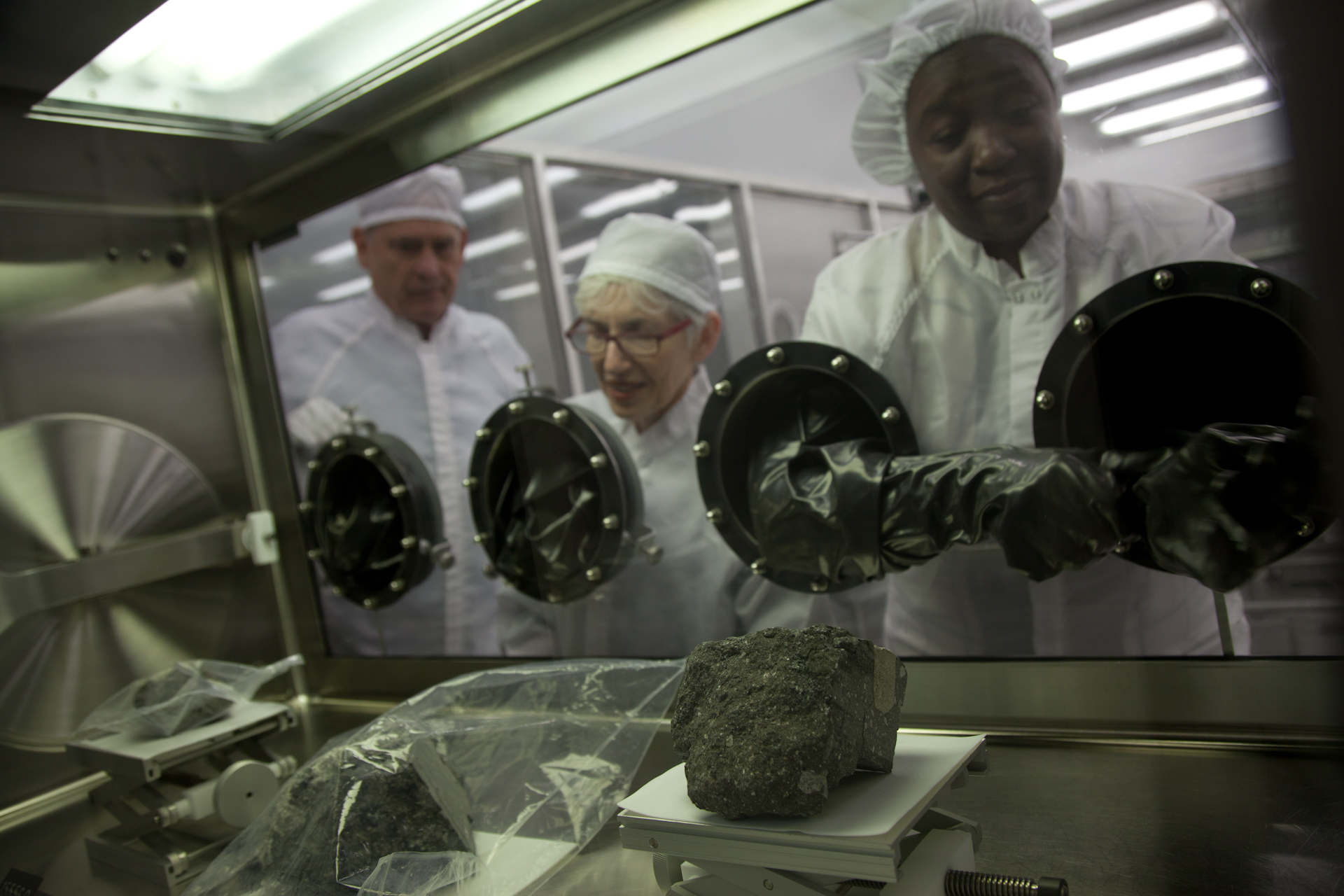While in Houston last week to lecture for the Lunar and Planetary Institute's "Cosmic Explorations" series, my hosts took me to the nearby Johnson Space Center on a thrill ride -- a tour of the Lunar Curatorial Lab, where the rocks the Apollo astronauts collected on the Moon now reside. By coincidence, I'd received a message immediately upon arrival in Houston from my friend Carolyn, the only person of my acquaintance ever to have eaten real Moon dust. The memory of that incident had been on my mind the whole day, and now here she was in a rare communication, writing to say she'd just located the astronomer who gave her that Moon dust as a love token four decades ago.
There was no Moon dust lying around the Lunar Curatorial Lab. It was a clean room in the technical sense -- so clean that I had to remove my jewelry before entering lest stray atoms of gold contaminate the environment. Obeying regulations, I put on a protective cap and suit (for the protection of the lunar samples) and stood several minutes in an air shower designed to relieve me of Earthly dust particles.
Within the facility's work area, Moon rocks lay untouchable inside glass cabinets giving them temporary shelter plus an atmosphere of pure nitrogen gas. Even Andrea Mosie, who has worked here for thirty-six years, handling Moon rocks on a daily basis, has never felt the Moon on her skin. She must put her hands in white fabric gloves first, then into the bulky black apppendages of the glove boxes, then don clear teflon gloves as a third barrier before picking up a hammer or chisel to break off small samples for the scientists who request them.
Only half a dozen rocks occupied the various cabinets. The rest -- approximately 800 pounds' worth -- hid in the adjacent vault, protected by a system of combination locks worthy of the secret service.
Cosmochemist Gary Lofgren, who holds the singular title of "Lunar Curator," gave me a glimpse of a Moon rock through a modified microscope set atop one of the glass cases. The rock sparkled at me, flashing tiny beams from a hundred shiny inclusions. I must have gasped, startled by the unexpected show of beauty. "They're still fresh," Dr. Lofgren explained, with an equally fresh enthusiasm for the specimens. "Ancient as they are, they never weathered on the Moon's surface, and they're protected from weathering here."
Thanks to all my new friends in Houston for this privilege.

